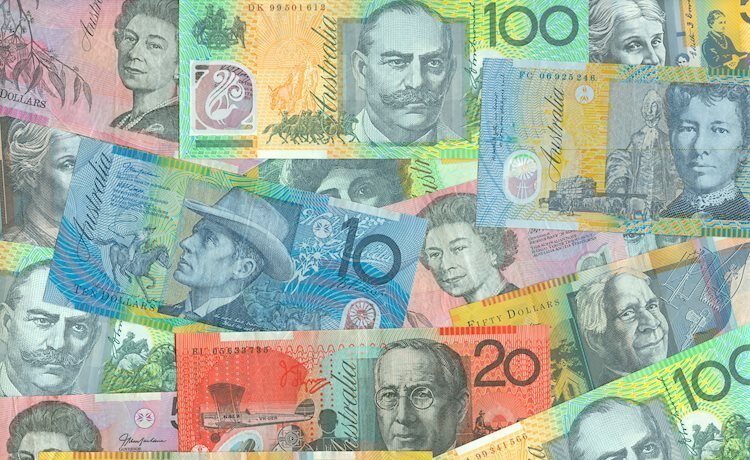- AUD/USD experienced a slight drop, adjusting to 0.6745 on Wednesday.
- The persistent hawkish views of the RBA keep backing the Aussie versus its peers.
- Dovish bets on the Fed weaken the USD.
On Wednesday, the AUD/USD is seeing a slight decline as traders digest the nearly 2% rally from the last sessions. The discourse on monetary policy divergence between the Federal Reserve (Fed), considering a less aggressive approach toward interest rates, and the unwavering position of the Reserve Bank of Australia (RBA) remains the mover of the pair, which put the Aussie ahead of the Greenback.
Despite the mixed Australian economic outlook and the RBA’s hawkish stance driven by high inflation, markets are projecting only a 25-basis-point easing for 2024, maintaining some support for the Aussie.
Daily digest market movers: Aussie’s rally tempered, softer stance by Fed opens the upside
- Softening US labor market data suggests that the Fed may adopt a less aggressive stance, leading to a potential weakening of the USD.
- In addition, the July Federal Open Market Committee (FOMC) Minutes showed that most of the participants were open to a September cut, which adds ammunition to the argument that the Fed will turn dovish at its next meeting.
- On the other hand, the RBA has clearly mentioned that the bank is not considering cuts for the moment, and this divergence is pushing the pair upwards.
- However, incoming data from both countries will continue to guide the pair’s trajectory.
- Markets are seeing high odds of a 100 bps cut by the Fed by year-end, while investors see little probability of a 25 bps cut by the RBA.
AUD/USD technical outlook: AUD/USD uptrend persists but with lower momentum
Technical analysis suggests that the AUD/USD pair has maintained its upward trajectory over the last few sessions. The Relative Strength Index (RSI), which indicates market momentum, has risen near the 70 benchmark. This hints at overbought conditions in recent sessions.
Additionally, the Moving Average Convergence Divergence (MACD) indicator confirms this bullish tone with the rise of green bars, an indication of prevailing bullish sentiment.
Looking ahead, the pair is likely to encounter resistance around the 0.6750 level. For any significant push through this level, traders should monitor volume and RSI closely. Supports are seen within the 0.6700-0.6650 zone.
Australian Dollar FAQs
One of the most significant factors for the Australian Dollar (AUD) is the level of interest rates set by the Reserve Bank of Australia (RBA). Because Australia is a resource-rich country another key driver is the price of its biggest export, Iron Ore. The health of the Chinese economy, its largest trading partner, is a factor, as well as inflation in Australia, its growth rate and Trade Balance. Market sentiment – whether investors are taking on more risky assets (risk-on) or seeking safe-havens (risk-off) – is also a factor, with risk-on positive for AUD.
The Reserve Bank of Australia (RBA) influences the Australian Dollar (AUD) by setting the level of interest rates that Australian banks can lend to each other. This influences the level of interest rates in the economy as a whole. The main goal of the RBA is to maintain a stable inflation rate of 2-3% by adjusting interest rates up or down. Relatively high interest rates compared to other major central banks support the AUD, and the opposite for relatively low. The RBA can also use quantitative easing and tightening to influence credit conditions, with the former AUD-negative and the latter AUD-positive.
China is Australia’s largest trading partner so the health of the Chinese economy is a major influence on the value of the Australian Dollar (AUD). When the Chinese economy is doing well it purchases more raw materials, goods and services from Australia, lifting demand for the AUD, and pushing up its value. The opposite is the case when the Chinese economy is not growing as fast as expected. Positive or negative surprises in Chinese growth data, therefore, often have a direct impact on the Australian Dollar and its pairs.
Iron Ore is Australia’s largest export, accounting for $118 billion a year according to data from 2021, with China as its primary destination. The price of Iron Ore, therefore, can be a driver of the Australian Dollar. Generally, if the price of Iron Ore rises, AUD also goes up, as aggregate demand for the currency increases. The opposite is the case if the price of Iron Ore falls. Higher Iron Ore prices also tend to result in a greater likelihood of a positive Trade Balance for Australia, which is also positive of the AUD.
The Trade Balance, which is the difference between what a country earns from its exports versus what it pays for its imports, is another factor that can influence the value of the Australian Dollar. If Australia produces highly sought after exports, then its currency will gain in value purely from the surplus demand created from foreign buyers seeking to purchase its exports versus what it spends to purchase imports. Therefore, a positive net Trade Balance strengthens the AUD, with the opposite effect if the Trade Balance is negative.
















